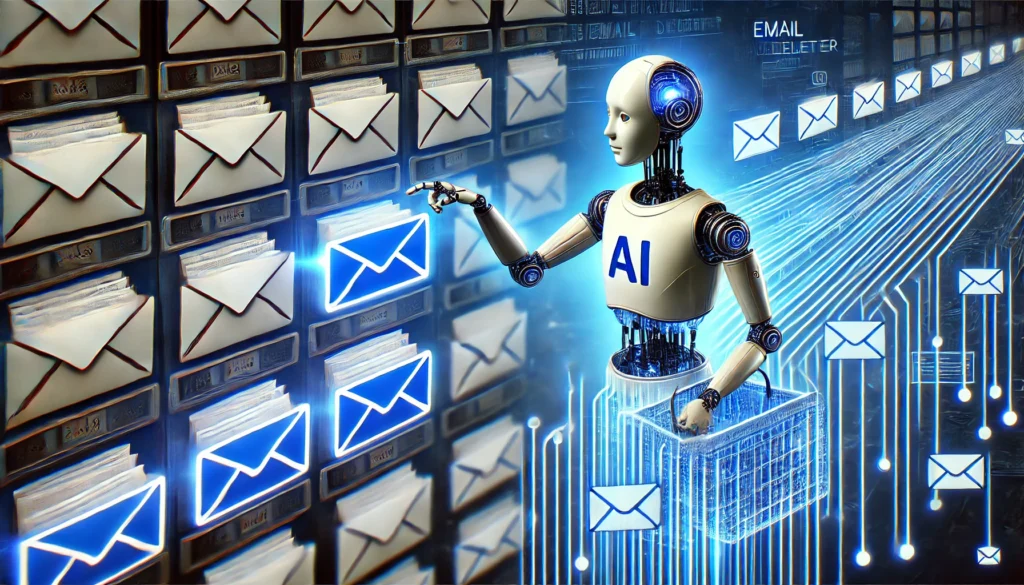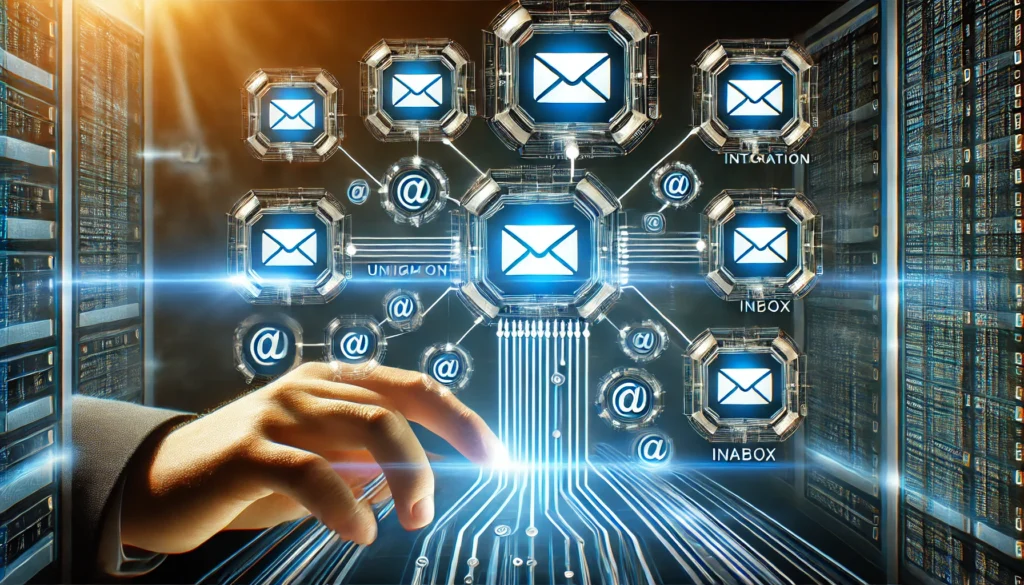Navigating through multiple email accounts can be a daunting task, especially if you’re a health and wellness coach, science journalist, or biohacker who already has a plethora of information to juggle. The constant toggling between different inboxes can be both time-consuming and prone to error, leading to missed communications and unnecessary stress. Fortunately, the ability to consolidate email accounts into a single, unified inbox can streamline your digital communication and increase efficiency.
You may also like: Top Email Deleters for Inbox Management
In this comprehensive guide, we will explore how to connect all your email accounts to Gmail, creating a seamless experience that allows you to manage multiple Gmail accounts from one inbox. By the end of this article, you’ll be equipped with the knowledge to combine email accounts effectively, ensuring that you never miss an important message again.
Understanding the Benefits of a Unified Gmail Inbox
Before we delve into the “how-to,” it’s essential to understand why you might want to unify your inboxes. Connecting multiple Gmail accounts into one inbox offers numerous advantages:
Efficiency: Saving Time and Reducing Complexity
Streamlining your emails into a single inbox saves time and reduces the complexity of managing multiple accounts. With fewer platforms to navigate, you’ll find your daily workflow becomes more fluid and less cumbersome. This newfound efficiency can give you more time to focus on your core responsibilities and strategic tasks.
Furthermore, a unified inbox eliminates the repetitive process of logging in and out of different accounts. This seamless approach minimizes distractions and allows you to dedicate more energy to reading and responding to emails.
Organizational Clarity: Categorizing and Prioritizing
With a unified inbox, you can categorize and prioritize emails more effectively, ensuring that urgent messages are addressed promptly. By using labels, filters, and folders, you can create a structured environment where important communications are easily accessible.
Moreover, a single view of all your emails allows for better tracking of ongoing conversations and projects. This clarity helps in maintaining a coherent understanding of different threads without the chaos of scattered information.
Reduced Error: Avoiding Missed Communications
A single inbox minimizes the risk of missing important communications, which can be crucial for professionals who rely heavily on timely information. The consolidation helps in catching all updates, notifications, and alerts in one place, leaving little room for oversight.
The risk of overlooking messages is further reduced by the ability to set reminders and flags within the unified inbox. This ensures that no critical email slips through the cracks, maintaining seamless communication with clients and colleagues.
Enhanced Focus: Maintaining Concentration
By reducing the need to switch between accounts, you can maintain better focus on your tasks, which is especially beneficial for biohackers seeking to optimize mental concentration. A streamlined inbox reduces cognitive load, allowing you to concentrate on the content of your emails rather than the logistics of accessing them.
In addition, less toggling between accounts means fewer interruptions, helping to sustain a state of flow in your work. This continuous focus is key in environments where precision and quick decision-making are vital.
How to Connect Multiple Gmail Accounts to One Inbox
Connecting your Gmail accounts involves a few straightforward steps. Here’s a step-by-step guide to help you achieve a unified Gmail inbox:
Step 1: Enable Gmail’s POP/IMAP Settings
Access Gmail Settings
Open your primary Gmail account and click on the gear icon in the top-right corner. Select “See all settings.” This initial step is crucial as it lays the groundwork for connecting multiple accounts.
Taking the time to familiarize yourself with the settings menu can also provide insights into additional features that might enhance your email management. By understanding these settings, you can customize your email experience more effectively.
Navigate to Forwarding and POP/IMAP
Click on the “Forwarding and POP/IMAP” tab. Here, you’ll want to ensure that “Enable IMAP” is selected. IMAP (Internet Message Access Protocol) allows you to access and manage your email from multiple devices.
IMAP’s advantage is its ability to sync emails across all your devices, providing a consistent view of your inbox whether you’re on a computer, tablet, or smartphone. This synchronization is vital for maintaining up-to-date communication.

Save Changes
After enabling IMAP, make sure to click “Save Changes” at the bottom of the page. This step ensures that your settings are applied correctly, paving the way for a successful integration of multiple accounts.
Saving changes might seem trivial, but it’s essential for avoiding frustrations that can arise from having to repeat steps. Confirmation of saved settings provides peace of mind and sets the stage for the next steps in the process.
Step 2: Add Another Gmail Account
Go to Accounts and Import
While still in the settings of your primary Gmail account, navigate to the “Accounts and Import” tab. This section is your control center for adding and managing additional email accounts.
Understanding the functionalities within the “Accounts and Import” tab can enhance your ability to manage multiple accounts efficiently. It provides options not only for importing emails but also for setting preferences on email sending and receiving.
Add a Mail Account
In the “Check mail from other accounts” section, click “Add a mail account.” This option initiates the process of linking another Gmail account to your primary inbox.
Adding a mail account is not just about receiving emails; it’s about integrating different aspects of your communication. This integration allows for a smoother workflow and a more organized approach to managing communications.
Enter Email Address
Enter the email address of the account you wish to add and click “Next.” This straightforward step requires precision to ensure that the correct account is linked to your unified inbox.
Confirming the email address is vital in avoiding errors that could complicate the setup. Double-checking this information ensures that the correct account is integrated, minimizing potential issues later on.
Choose Import Option
Select “Import emails from my other account (POP3)” and click “Next.” This choice determines how your emails will be transferred to your unified inbox.
Understanding the difference between POP3 and IMAP can help you make informed decisions about your email setup. While POP3 is suitable for downloading emails to a single location, IMAP provides more flexibility for accessing emails from multiple devices.

Enter Account Information
You’ll be prompted to enter your password for the additional Gmail account. Make sure to check the option “Leave a copy of retrieved messages on the server” if you’d like to keep emails on the original server.
This option is particularly useful if you want to maintain a backup of your emails on the original account. It ensures that even if there are issues with the unified inbox, your emails remain safe and accessible elsewhere.
Add Account
Click “Add Account” to complete the process. This final step solidifies the connection, allowing you to start receiving emails from multiple accounts in one inbox.
Completing this process is a significant milestone in your journey towards a unified inbox. It represents the culmination of steps taken to streamline your communication and enhance productivity.
Step 3: Configure Sending Options
Send Mail As
To send emails from your unified inbox using different accounts, go back to the “Accounts and Import” tab in settings. This functionality ensures that you can maintain different professional identities from one inbox.
The ability to send mail as different accounts is crucial for professionals managing multiple roles or businesses. It allows for seamless communication without revealing the complexities of your email setup to recipients.
Add Another Email Address
In the “Send mail as” section, click “Add another email address.” This allows you to send emails from the unified inbox using any of your linked accounts.
Adding another email address for sending ensures that replies and new messages can be dispatched from the correct account. This feature is essential for maintaining professionalism and clear communication with various contacts.
Enter Email Information
Enter the name and email address you want to use for sending emails, then click “Next Step.” This information determines how your emails will appear to recipients, maintaining consistency in your communications.
Providing accurate email information is critical for ensuring that your messages reach their intended recipients without confusion. It also helps in maintaining the integrity of your professional image.
Verify Address
Gmail will send a verification code to the added email address. Enter this code to verify and complete the setup. Verification is a security measure that protects your email accounts from unauthorized access.
Completing the verification process is essential for activating your ability to send emails from different accounts. It serves as a final confirmation that your setup is secure and fully operational.
Troubleshooting Common Issues
While the process is generally straightforward, you might encounter some common issues when connecting multiple Gmail accounts. Here’s how to troubleshoot them:
Issue 1: Authentication Errors
If you’re experiencing authentication errors, ensure that you have entered the correct password for the email account you are trying to add. Additionally, check that “Allow less secure apps” is enabled in the settings of the account you’re adding, if necessary.
Double-checking your login credentials can often resolve authentication issues quickly. If problems persist, reviewing security settings and permissions can provide further insights into the root cause.
Issue 2: Delayed Email Retrieval
Emails may not appear instantly in your unified inbox. Gmail’s POP3 service retrieves emails at intervals, so patience is key. If delays are frequent, consider adjusting your settings or using a different email client.
Understanding the retrieval schedule of your email service can help manage expectations. For critical communications, setting up notifications or alerts can bridge the gap until emails are retrieved.
Issue 3: Missing Emails
If you notice missing emails, verify that the settings for leaving a copy of retrieved messages on the server are correctly configured. This ensures emails remain accessible from the original account as well.
Regularly reviewing your email settings can prevent issues with missing emails. Ensuring that all configurations align with your communication needs is crucial for maintaining seamless access to important messages.

Future Implications of a Unified Inbox
The ability to consolidate email accounts is not just a matter of convenience; it’s a step towards more integrated and efficient digital communication. As technology advances, the trend towards unification and centralization is likely to continue, driven by the demand for seamless user experiences.
Impacts on Professional Efficiency
For health and wellness coaches, science journalists, and biohackers, a unified inbox enables more time to focus on what truly matters: providing valuable insights, exploring scientific breakthroughs, and optimizing overall well-being. The streamlined communication process allows for more creativity and productivity in professional endeavors.
Technological Advancements
As email technology continues to evolve, the potential for even more integrated communication solutions becomes evident. Innovations such as AI-driven email sorting and enhanced security measures are expected to play a role in the future of unified inboxes.
User Experience and Digital Trends
The demand for a seamless user experience continues to shape digital trends, with unified inboxes being just one aspect. As digital natives and tech-savvy professionals seek more intuitive solutions, the development of centralized communication platforms is expected to accelerate.
In conclusion, connecting all your email accounts into a single, unified inbox on Gmail is a practical solution to streamline your communication, enhance productivity, and maintain organizational clarity. By following the steps outlined in this guide, you can create an efficient email management system that supports your professional and personal goals. Embrace the power of a unified inbox and experience the benefits of consolidated communication today.
Further Reading:
Combine Email Accounts Efficiently
Merge Multiple Gmail Accounts Into One Inbox: A Step-by-Step Guide
Guide: Manage Multiple Email Accounts from One Place
Important Note: The information contained in this article is for general informational purposes only, and should not be construed as health or medical advice, nor is it intended to diagnose, prevent, treat, or cure any disease or health condition. Before embarking on any diet, fitness regimen, or program of nutritional supplementation, it is advisable to consult your healthcare professional in order to determine its safety and probable efficacy in terms of your individual state of health.
Regarding Nutritional Supplements Or Other Non-Prescription Health Products: If any nutritional supplements or other non-prescription health products are mentioned in the foregoing article, any claims or statements made about them have not been evaluated by the U.S. Food and Drug Administration, and such nutritional supplements or other health products are not intended to diagnose, treat, cure, or prevent any disease.


